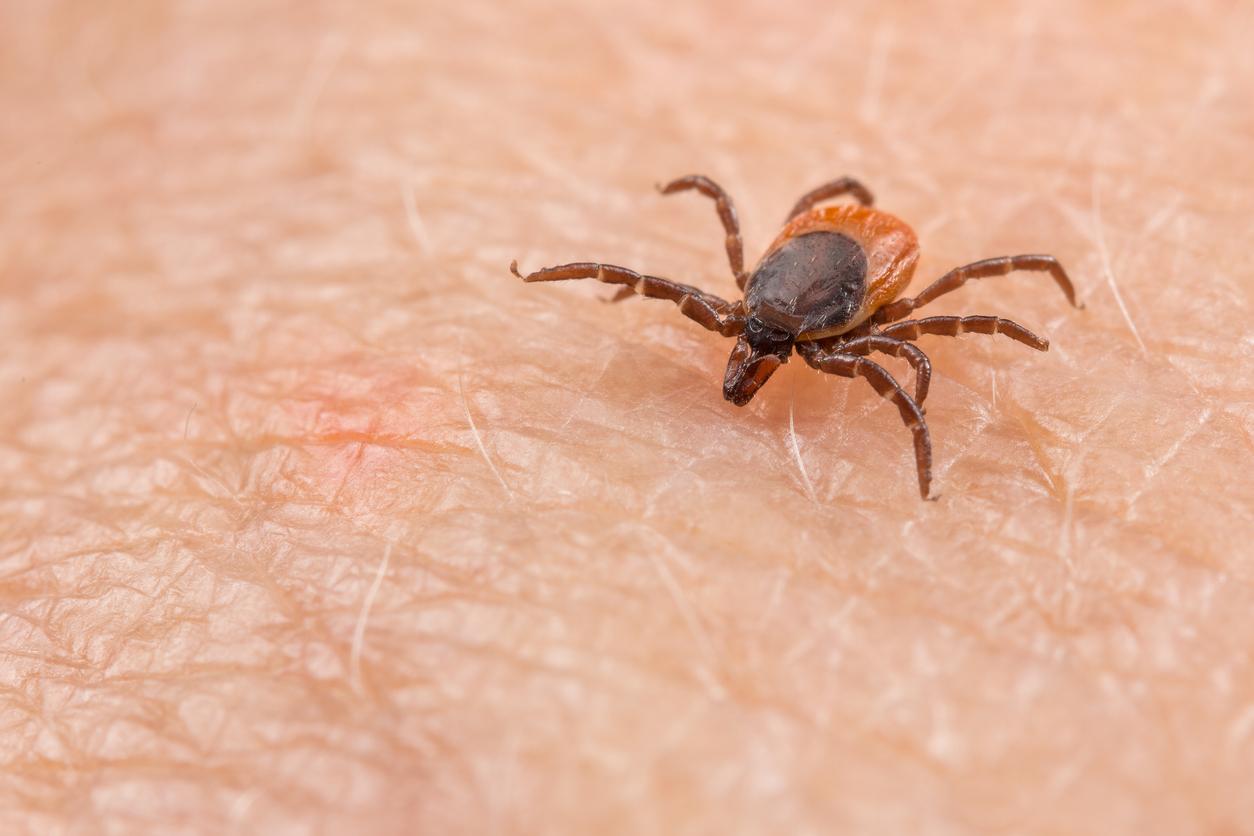The protein responsible for persistent inflammation in Lyme disease has been identified.

- Lyme disease which is transmitted by ticks results in widespread pain
- It remains difficult to diagnose because of the multiplicity of possible causes of this pain.
Lyme disease still has many mysteries. But one of them, the persistence of the inflammatory state, could be solved by the work of Brandon Jutras, a professor at Virginia Tech, who has identified what appears to be a missing piece in the puzzle to explain the effects of the Borrelia burgdorferi bacterium transmitted by ticks. This is a protein that would play an amplifying role in inflammation. The study was published May 13 in the journal Plos Pathogens.
Inflammation and pain
According to Brandon Jutras, everything is played out in the peptidoglycan – a kind of bag in the form of a net that all bacteria make to protect their cells – from Borrelia burgdorferi: this persists in the body of patients for weeks to several months after the initial infection, causing inflammation and pain.
And this effect is all the more important since a protein associated with the peptidoglycan of Borrelia burgdorferi plays an amplifying role in inflammation by deceiving the immune system of patients. It is this protein identified under the name of NapA (Neutrophil Attracting Protein A) which seems capable of recruiting immune cells called neutrophils to the inflammatory peptidoglycan.
A sneaky protein
But “NapA presents itself as a sneaky protein capable of tricking our immune system, and this in two ways”, explains Brandon Jutras. At the onset of infection, it would act as a decoy by attracting immune cells as the bacteria die and release the peptidoglycan, allowing viable bacteria to escape. And at later stages, iul would attract immune cells to the petidoglycan, allowing inflammation to persist.
“From the point of view of prevention and diagnosis, it is possible that the combination of petidoglycan and NapAnsoir could be a new target and also a possible avenue for the development of vaccines”, specifies Brandon Jutras.

.

















